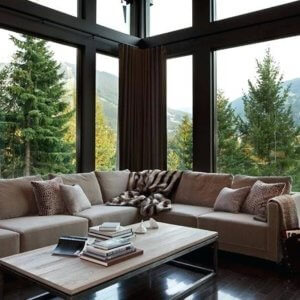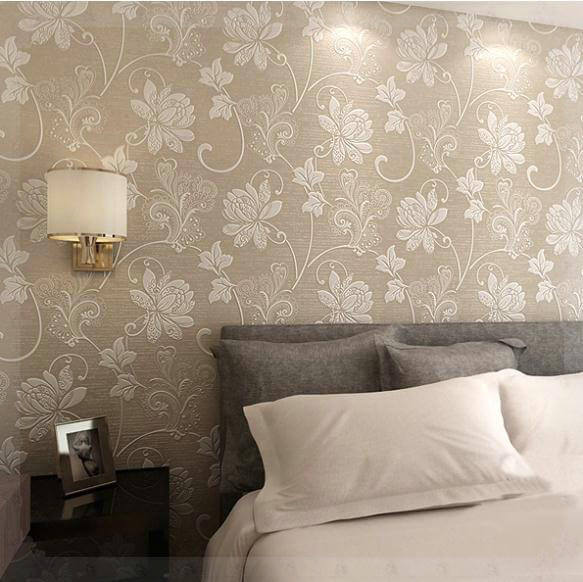
Login
X
- Home
- About Us
- Courses
- Graduation
- Diploma Certificate
- Professional Diploma
- Special sessions / Aptitude boost up
- News & Events
- Student zone
- Placement
- Gallery
- FAQ
- Contact Us

One of our previous blogs gave pointers on the different subjects to be studied under interior design . So you get all excited and get admission into the best interior design college in calicut. Classes begin and now you have industry experts and design professionals bombarding you with new terms and alien concepts. You struggle to absorb all of it and frankly that’s natural. This leads you to a learning crisis in interior design. You start asking yourself, is this what I signed for?
Troubled much? Don’t worry! In this section you will find some useful tips on learning and making use of all the knowledge provided to develop into a successful interior designer.
Observe each step, each line carefully as your instructor draws anything on the white board in front of you. The final illustration matters, yes. But you end up learning a thing or two about presentation sketching apart from the illustration itself.
You bought that instrument kit when academic sessions began, in the heat of the moment. Overtime with routine use, you developed a bit of drawing skills and then one fine morning you decide to skip the set, right? Wrong. You have just started. The nuisance of wasted moments over handling the instruments in the beginning of your classes will gradually become a reflexive method every time you want to start drafting/drawing.
Remember the addition, multiplication, subtraction and division sums that you solved in your primary classes? Yep, that’s pretty much what is required by you to master. Proportion and scaling is frequently practiced. It helps a great deal when you can mentally calculate on the spot whenever required. Moreover, a fair idea of feet, meter and centimeter is always a huge advantage.
The habit of surfing through design and architecture magazines is definitely one to keep. Don’t restrict yourself to magazines only; don’t spare any source that enlightens you in this field. It is very important to be aware of the latest trends and developments. You will be surprised with your own academic development once you become proactive.
Seek a new learning daily. Go through what was taught in the class daily, don’t mug up. Just note whether there is anything that you didn’t understand. Make an effort to clarify your doubts the very next day. Once you set a routine, things will look better.
Never settle for the current piece of information. Interior design is a highly dynamic field. Keep researching in the existing avenues. Keep searching for new elements. Market surveys matter a lot in interior design and so does Rate analysis. Not only do they make you aware of current market rates and scenario, they also help you with your initial stages of career, be it as an employee or as a freelancer.
Try your best to not miss any class. It is all the more crucial in practical sessions, site visits and presentations. These are not being conducted just to kill your time. The skills gained from these classes reflect in your works and the knowledge gained first-hand is irreplaceable. Learning by doing is a big, big part of Interior design.
Searching for a premium interior design college? Click on college website to know more.

The career opportunities in Interior Design have grown rapidly due to the high prospects for competent professionals in design industry. An interior designer gains experience once he/she starts working in the field, either as an employee or as a freelancer and this boosts his/her quality of work. It is therefore very important that one selects a suitable course in interior designing that enables the student to acquire knowledge for better scopes in placements.
While selecting an interior design course, there are many points to consider. Do you want to get just the basics and start designing as early as possible? Or are you looking for a course that provides you all essential elements, but in detail? Are you searching for a short term course that covers all areas of designing? Or are you interested in pursuing designing as your graduation course and then eventually get your career started? To cater to all the above, at present the Interior Design courses are provided at three levels: short term vocational/certificate courses, Diploma courses and graduation/ post-graduation courses.
These courses are often endorsed by independent institutes, often with special focus on any one type of designing, such as furniture designing, product designing, furnishings, lighting, color psychology and application etc.
The diploma courses are ideal for those who are already working professionals but want to explore or expand their career in Interior Designing. These are generally certified by a university or an educational board.
The graduation level courses are three-year programs, with an optional added internship term which can be for a few months to a year.
Each course has its own set of advantages. Depending on what you want to do after learning Interior Design, you can choose a corresponding Interior Design program. With the help of the right faculty team and proper guidance, you can make your dream of becoming a successful Interior Designer come true. Choose wisely!

When Pantone announced Ultraviolet as its color for this year, the industry had a fair idea what to expect in the interior design trends in 2018. The style statements in design are extended to all related fields such as fashion design and product design. The year 2018 has witnessed interesting symphonies of unsuspecting elements to add the spark in interiors and the results have been pretty impressive. Here is what you will come across in social media this year!
Hectic schedules have deprived people of soothing moments in their daily lives. This has led to a desire of subtle decoration of master bedrooms. Minimalism rules when it comes to decorating bedrooms this year. Neutral shades and calmer tones help in soothing down the occupant and minimalism ensures a cluster free environment for a peaceful sleep.
The stainless steel and wooden tone cabinets have started giving way to their slightly colorful counterparts. Of course, a white kitchen is classic but people now want their kitchens to be livelier and more in sync with their individual choices.
The use of wood in flooring and furniture can never be replaced. What this year brings to it is change of preferences. Instead of plain strip locks, herringbone patterns have emerged to be a common wooden feature. The warmth and elegance of wooden shades have been extensively used in imparting a rich interior look.
A bathroom these days is a get-away sanctuary- spa-like features add element of luxury and comfort where in a person can relax and seek serene surroundings. Organic touch ups in the form of wooden elements and natural stones along with a sprinkle of greenery here and there, takes bathrooms a few notches up.
Limited textures are trending. What could be more appealing than a touch of nature? Popular fashion and fabric patterns denote a constant presence of floral imprints, mimicking the 70’s. The difference here is the limited use in the interiors, such as in wallpapers and bed linens. The use is restrained and yet experimental.

While 2017 did see some statement colors making rounds in premium interiors, 2018 is more about popping colors and it gets only bolder- it happily accommodates gold and metallic hues. This does increase the work of an interior designer since it calls for clever combinations that stay easy on the eyes and continue to delight the occupant.
This year the focus is on vintage pieces- of lighting, furniture, curios, accessories and even flower pots. Yes, you heard that right. This is THE year when you should not hesitate to splurge a handsome amount on that antique furniture you have been longing for since eternity! These elements add a defining value to an interior and end up outlining the style quotient of the spaces they occupy.
Each year ushers in a new dawn of fashion and design specifications. It is important to understand that these ‘rules’ are a simple description of what’s hot and happening in interior design arena, specially defined for trend-seekers. However, the ultimate value of an interior is in the way it reflects the aesthetic tastes of the owner, some of whom eventually become trend-setters.

If interior design has always fascinated you, then you should definitely explore career scope in interior design. The aim is
to become a successful interior designer who is skilled in all aspects of designing, be it space planning, furniture
designing, lighting, landscaping, applying fabric finishes or any other design branch. So the big question is-what are the
areas that have to be extensively understood to start working as an interior designer? Read on.
It remains an effective tool to convey ideas. Freehand sketches, proportional drawings, measured
drawings, projections; rendered illustrations- the category is specifically aimed at making you perfect in
conveying your designs to both laymen as well as professionals. Be it furniture, furnishings or views, graphics
help you in effective visual communication.
Design and architecture are constantly evolving. Naturally, one should be well informed about
existing and useful materials when it comes to construction and design of buildings, furniture and other
elements. A thorough knowledge of materials includes information regarding suitable as well as avoidable
materials according to the local climate of an area. Apart from improving efficient designing, the knowledge of
materials is very important in economizing the total designing process and making the project cost efficient.
Design is everywhere, literally. With increasing emphasis on environment, a designer these days
is expected to apply his/her skills not only to the house, but to its surroundings as well. Shrinking spaces have
led to the popularity of interior landscapes as well, such as courtyards and water bodies.
Interior fabrics such as carpets, curtains, upholsteries, bed spreads, table linen, kitchen linen to name
a few, add that hint of comfort and supple finish to a well defined interior. One should be aware of the vast
collection of soft furnishings available in the market these days, their uses, advantages and disadvantages-
before they are applied to an interior.
What makes an interior attractive? The answer to this question forms the content to be learned in
aesthetics. Apart from effective arrangement of individual interior pieces, it is equally important to understand
the design secrets that add the Midas touch. A successful interior is the result of strategic application of design
principles and elements.
Each member of a family has his/her own choice when it comes to design and color. A clever designer is
successful in making the best of all selections and creating interiors that please the whole family. What comes
handy in that situation? A thorough understanding of colors. The right type of color in the right amount results
in the right outcome.
Some designers have keen interest in taking residential projects, others focus on
commercial sectors. When an interior design student is ready to begin his/her practice, they tend to have a fair
idea about their preferred areas. A multitude of specialties exist, such as kitchen design, product design,
furniture design, color consultancy, lighting and so on.
A building needs some essential services such as plumbing, fire and safety, adequate
heating and ventilation and electricity and interior designers make sure that all required services are
incorporated in a structure at the planning stage itself.
It is not just about Vastu or Feng Shui. Space planning requires in-depth knowledge regarding
building laws, bye- laws and related legal insights. It not only saves time in the planning stage itself, but it also
eases out many steps during construction period for both the client and the designer.
Depending on what course you select, you might learn some more or may superficially cover a particular topic during
course duration. The happy news is, learning does not have an expiry date! Armed with a strong theoretical and practical
base, you can make it big with time, perseverance and experience in the field of interior designing.

It is that month of the year- admissions are open across various colleges that have a variety of courses to offer. Once you have decided to study interior design, it is very important to secure a seat in a premium college that offers world class education. This applies to Interior Design as well. Read on the following tips to understand how you can select the best college to study interior design.
CV AND INTERIOR DESIGN PORTFOLIO: When a student nears course completion, such colleges make sure that students have received all the skills and crafts needed to frame their portfolio. A portfolio generally contains pictorial representations and works done by the student and it is an essential tool to attend an interview. Apart from this, such institutions also help the students in developing an apt CV to land the job they aspire for.
Simply by following these tips, you can be assured of selecting nothing less than the best among Interior Design colleges. The correct choice will definitely pave your path to becoming a successful interior designer. All the best!
In the past, the term ‘Design’ had been frequently associated with Fine Arts and drawing skills. Naturally, a skilled designer was expected to be ‘gifted’ enough to materialize the imagination and concepts with a high degree of precision in every sense-be it the lines, colors or the interpretation styles. All of these demands often proved to be too taxing for a design aspirant, especially for those with limited/restricted sources.

Thus, Necessity proved to be the mother of invention! Technology gave birth to many tools such as computers, software, laptops and the Internet. Everything became available at the click of a button. These sources greatly helped those in need and thus, the creative Design field eventually expanded to Graphic Design, Web Design, Interior Design, Jewelry Design, Fashion Design and the likes.
The Scope in design field is definitely dependent on creativity; however, the fact that hard work beats talent stays true to it. This easily applies to the field of Interior Design. Gone are the days when Interior Design simply meant decorating an enclosed space or rearranging furniture. Today, it requires an aspirant to learn the varied facets in it, right from the basic elements and principles to building construction to landscaping and what not!
Interior design continues to be an exciting career choice. Sure, you can sketch some lines and have an aptitude in color schemes, furniture and furnishings. You want to take it up and pursue, but then this question pops in your head- CAN I REALLY BECOME AN INTERIOR DESIGNER? Here are some points that may help you to decide whether you should really go for it.




Being a highly rewarding field, it is imperative that one selects nothing than the best for studying Interior Design. With so many options, it only makes sense to secure admission in a college that provides the best programs at Graduation/ Diploma Level. To know more, click here
Phone: 0495 272 2242